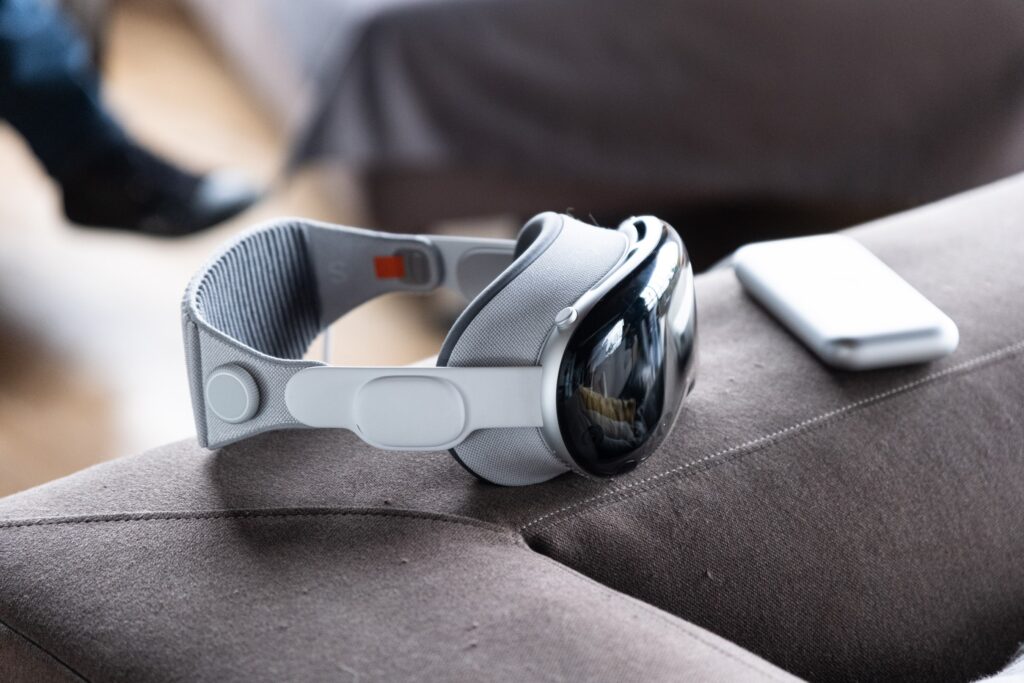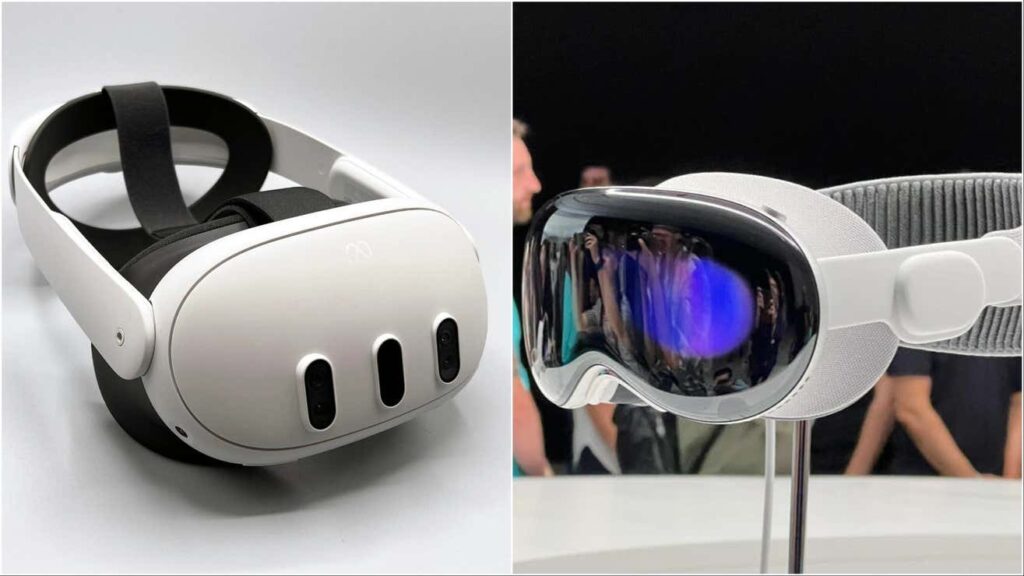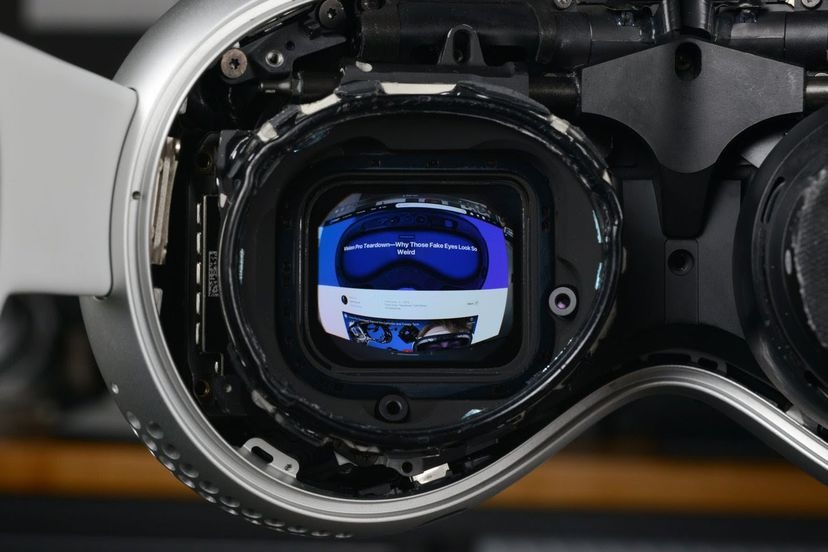Apple’s highly anticipated VR/AR hybrid headset, Vision Pro, is slated to launch later this year. As expected from Apple, this wearable device aims to revolutionize the extended reality landscape with cutting-edge tech and innovation.
While full details remain under wraps, early reports and rumors paint an exciting picture of the Vision Pro headset’s capabilities. From the gorgeous high-res displays to advanced hand tracking to unprecedented portability, this headset could be a real game-changer.
Let’s dive deeper into some of the key features that set Vision Pro apart from the crowd and offer consumers an enticing new option in the expanding XR space.

Stunning Visuals Enabled by Twin Retina Displays
Visuals make or break any immersive XR experience. Apple is sparing no expense to ensure Vision Pro offers best-in-class image quality enabled by a cutting-edge dual 4K display system with advanced optics.
Each eye sees an independent 3,386 x 3,386 pixel micro-OLED panel with smooth 120Hz refresh rates. This results in stunning clarity, crisp detail, and fluid motion. Expect visuals that pop thanks to finely-tuned brightness levels, outstanding colors and contrast, and HDR support.
The innovative optical system provides a combined field of view around 100 degrees for deeply immersive environments. Distortion is also minimized thanks to breakthrough pancake lenses engineered specifically for close-up use.
For AR functionality, Vision Pro utilizes stereo cameras for pass-through video at a sharp 60fps, seamlessly blending digital graphics with real-world visuals.
Realism Without Limits
Combined, this display hardware pushes realism to new heights for both VR gaming and productivity. Visuals stay razor sharp even when focusing on details up close, preventing distortion or eyestrain. The expansive field of view with silky smooth frame rates takes immersion to the next level.
It brings Virtual Reality up to the same visual standards consumers expect from Apple’s leading Retina displays. For Augmented Reality uses, passthrough video appears as sharp and stable as the real world.
Revolutionary Hand Tracking
While stunning visuals set the stage, revolutionary hand tracking technology promises to enable incredibly intuitive control and interaction. Vision Pro utilizes advanced sensors to deliver precise finger and gesture tracking without any controllers needed.
Ultra-sensitive 3D scanning monitors each fingertip’s movements accurately down to 1 millimeter. Touchpads on the headset track palm and arm positions as well. This allows for life-like manipulation of objects in VR, as well as seamless blending when switching between AR and VR.
Force sensors and haptic feedback provide sensations of pressure and resistance when handling virtual objects. This takes immersion to astounding new levels.
Intuitive Experiences
Controller-less hand tracking paves the way for revolutionary user experiences. It empowers incredibly intuitive interaction in VR, from realistic grasping and throwing to new ways of exploring virtual worlds. The nuanced finger and palm tracking opens up new possibilities for gesture controls.
In AR applications, the headset’s ability to map hands and real-world objects promises to enable seamless blending of real and virtual. This could truly transform fields like design, education, and healthcare where precision hand-eye coordination is crucial.
Impressive Portability
Despite packing bleeding-edge display and tracking technology, early reports suggest Apple has designed Vision Pro to be surprisingly lightweight and well-balanced. This enables unprecedented portability for a device of its capabilities.
Weighing around 300-400g, Vision Pro is significantly lighter than bulkier competitors. Clever weight distribution keeps it feeling comfortable instead of front-heavy. This is a headset consumers could feasibly wear for hours without strain or fatigue.
For comparison, Meta’s high-end Quest Pro headset weighs over 700g. Apple once again shows its strengths of seamlessly blending advanced hardware into ergonomic designs.
VR on the Go
Thanks to its shockingly portable and comfortable form factor, Vision Pro stands to make quality VR/AR experiences far more accessible. It opens the door to spontaneous and social use cases beyond dedicated gaming setups.
Imagine carrying Vision Pro in your bag to simply slide on anywhere for quick access to immersive worlds both real and virtual. The battery supports up to 2 hours active use for out-and-about experiences before a recharge.
For creative pros, having a powerful but portable XR device enables new workflows and productivity gains on location or on the go. The possibilities span from virtual onset previews to architects evaluating designs in AR on-site.
Powerful and Efficient Apple Silicon
Under the hood, Apple’s latest custom silicon delivers the processing muscle necessary to drive all those pixels and sensors while maintaining cool and efficient operation. Though exact chip details remain unconfirmed, it will likely be a variant of Apple’s blazing-fast M2 chip.
Multi-core CPUs and GPUs work in tandem to deliver 90fps (or even 120fps) to both displays simultaneously across OS and app operations. Specialized neural engines handle sensor processing for hand tracking and spatial/depth mapping.
Just as importantly, Apple’s chip engineering ensures power efficiency. That’s key to packing robust performance in a lightweight, portable device. As with Apple’s mobile chips, their custom silicon should pace well ahead of rival VR/AR solutions.
The Power for Next-Gen Experiences
Apple’s proprietary silicon brings their hardware/software integration advantage to the table. Features like hand tracking are seamlessly baked in rather than added on through partnerships.
Having robust CPUs/GPUs optimally configured for XR workloads ensures Vision Pro can power the most demanding next-gen experiences. Smooth 90-120fps across two 4K displays takes an immense amount of processing.
We should expect Apple’s realityOS platform and ecosystem to leverage their chips’ capabilities for truly groundbreaking apps and use cases well into the future. Their silicon expertise gives them control over the experience.

A Modular, Customizable Design
While Vision Pro feels remarkably svelte and integrated out of the box, Apple also embraces modularity and personalization in its design. Core components like the displays and electronics remain fixed, but users can customize other aspects to tailor the fit and function.
For example, the outer visor/faceplate portion magnetically detaches to enable simple swapping. Users could choose faceplates with different opacity filters or even prescriptions. The headband is also interchangeable to dial-in comfort and support.
Optional battery packs attach to extend use time on the go. Down the road, Apple could offer upgraded sensors or cameras to swap in as they release annually like iPhones. It balances integrated experience with personal preference.
Adaptability Built-in
Embracing modularity allows a product like Vision Pro to adapt across many different use cases. Consumers can tweak configurations based on their priorities, from active mobility to long workstation use.
For enterprise deployments, companies could issue a baseline headset then customize faceplates or straps tailored to specific applications. It extends the product lifecycle by enabling incremental upgrades rather than full replacements.
Overall, modularity hints at the well-thought-out nature of Apple’s design. They want to enable an integrated experience yet recognize the need to accommodate user diversity and choice when wearing tech on your face daily.
Takeaway and Analysis
Based on early reports and rumors, Apple’s Vision Pro headset stands poised to drive XR experiences forward in exciting new ways. The combination of displays, hand tracking, power efficiency, and ergonomics appears uniquely compelling.
Of course, the biggest lingering question remains around pricing and overall value proposition. If Apple can deliver these innovative capabilities at a mainstream consumer price point under $1000, Vision Pro could very well take the XR market by storm upon release.
However, if they target a premium professional market with a price approaching $2000 or beyond, mainstream adoption will face hurdles. The pricing strategy may focus on high-value enterprise use cases first.










Add Comment